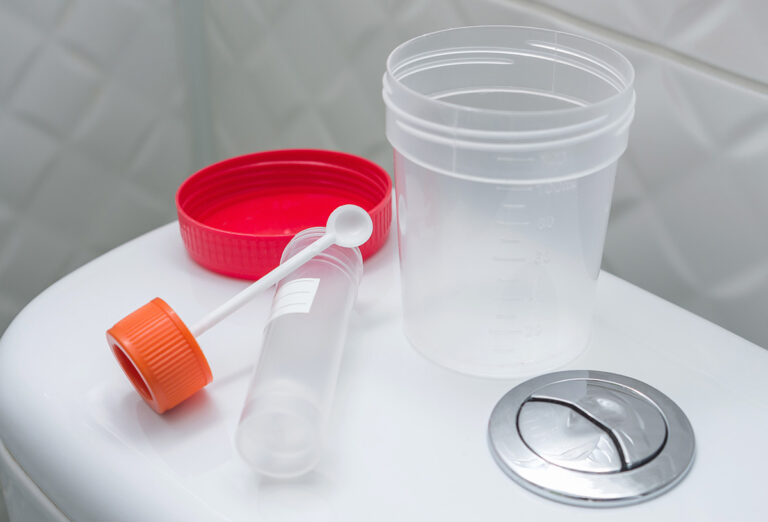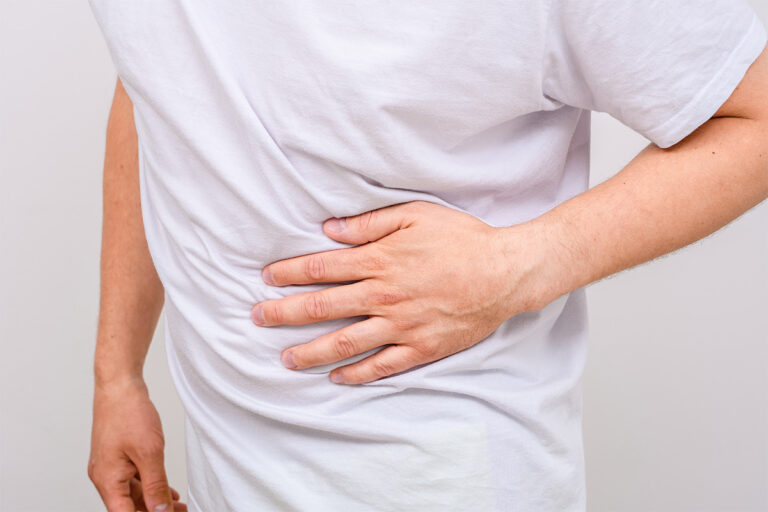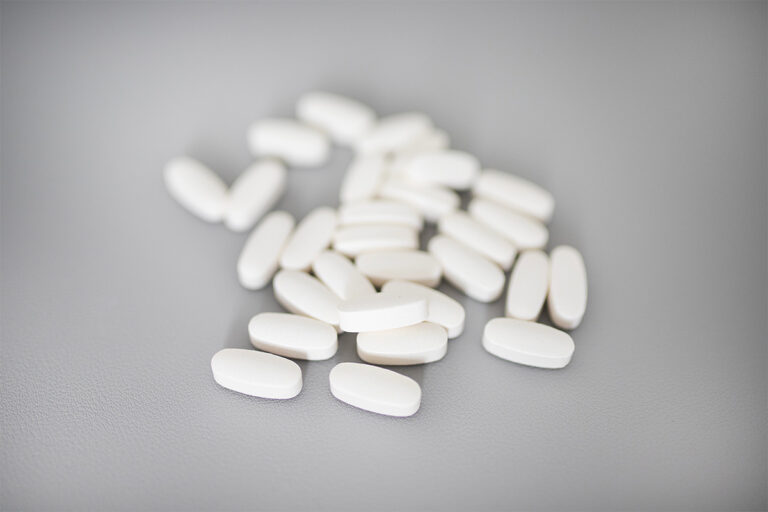Understanding muscle pain and soreness
Muscle pain occurs when specialized nerve receptors called nociceptors are activated, sending a signal to the central nervous system that the muscle has encountered painful or potentially harmful stimuli. Nociceptors can be activated by mechanical stimuli, such as trauma (damage) to the muscle, inflammatory mediators, and ischemia, which is restriction of blood supply and oxygen to the tissue. (7)(13) Some of the common types of muscle pain are summarized below.Exercise-induced muscle damage
There are three general types of exercise-induced muscle damage (EIMD) associated with muscle pain, which include:- Type 1 injury, also known as delayed-onset muscle soreness (DOMS), which occurs 24 to 48 hours after exercise of an untrained muscle
- Type 2 injury, which occurs due to a partial or complete muscle tear, and is characterized by acute, disabling pain
- Type 3 injury, which occurs during or immediately after exercise, and includes muscle cramps or soreness (16)
Muscle soreness
Muscle soreness, such as soreness following physical activity, is believed to result from the inflammatory response to muscular damage that occurs following eccentric contractions (muscular lengthening). (5)(7)Muscle cramps
Muscle cramps generally involve only one muscle, and are involuntary, sudden, and painful muscle contractions that can cause persistent soreness. Cramps may gradually resolve on their own or be improved by stretching the muscle. (14)Muscle spasms
Muscle spasms, which involve several muscles, are also involuntary and abnormal muscle contractions. Spasms are not usually painful and typically can’t be relieved by stretching the muscle. (14)Neuropathic pain
Neuropathic pain is caused by compression of the spinal nerves and the resulting nerve impulses towards nociceptor endings. This can lead to the release of inflammatory mediators that sensitize muscle nociceptors, increasing neuropathic pain. (13)Chronic muscle pain
Chronic muscle pain is long-lasting pain that can result from either persistent, repeated injury, relieved when the source of injury and pain is removed, or from an acute injury with continual pain due to changes to the nociceptive system. (7)
Causes and risk factors of muscle pain
The causes and risk factors that may contribute to different types of muscle pain, soreness, or cramps include:- Acute injury (e.g., bruises, sprains, strains) (1)
- Certain health conditions (e.g., anxiety, metabolic disorders, neuropathies) (7)(14)
- Increased exercise duration or intensity (14)(16)
- Older age (7)
- Overuse injury (e.g., bursitis, tendinitis) (1)
- Sedentary lifestyle (7)
Did you know? Some estimates state that 60 to 85% of individuals in Western countries have experienced back muscle pain during their lifetime. (13)
Natural muscle pain relief
Treatment approaches can vary based on the cause and type of muscle pain. If you experience muscle cramps, soreness, or pain, here are some evidence-based techniques that can provide muscle pain relief.Cryotherapy or Hydrotherapy
Cryotherapy is an approach to muscle soreness therapy that involves immersion in freezing or near-freezing temperatures, such as a cold water bank or tank, or in the case of true cryotherapy, exposure to ice cold gas between -110 and -190°C. (20) The benefits of cryotherapy include improvement in muscle function loss, inflammatory markers, and pain recovery following muscle damage. (20) Similarly, a literature review shows some evidence that cold water immersion at temperatures below 15°C may reduce DOMS following exercise compared to just rest alone. (2)Foam rolling
A foam roller is an exercise recovery tool that is believed to improve range of motion and skeletal muscle function, and reduce muscle and joint pain. A controlled trial examining the effects of foam rolling following exercise found that using a foam roller was associated with reduced muscle soreness, improved range of motion, and improved muscle activation, likely a result of assisting connective tissue recovery. (12)Massage
A systematic review examining the effects of exercise recovery techniques on muscle damage, soreness, fatigue, and inflammatory markers found that massage therapy was the most effective in relieving DOMS and fatigue. (4) Similarly, in a systematic review and meta-analysis, massage following intense exercise was associated with decreased muscle soreness, improved measures of performance, and reduced levels of creatine kinase, a marker of muscle damage, compared to no intervention. (8)Stretching
Stretching is another approach commonly recommended for muscle recovery and preventing pain following exercise. A study in older adults with nocturnal leg cramps found that nightly stretching before bed was associated with reduced severity and frequency of leg cramps. (9) However, there is conflicting evidence on the effects of stretching and muscle pain relief following exercise; one systematic review did not find significant effects of stretching on DOMS and fatigue. (4)
Supplements for muscle pain
Research has also examined dietary supplements and their potential applications for muscle pain relief.BCAAs
Branched-chain amino acids (BCAAs), which include the amino acids leucine, valine, and isoleucine, have some potential for alleviating muscle cramps and soreness. A pilot placebo-controlled study of BCAA supplementation before exercise with the individuals’ non-dominant arm found that DOMS, upper arm circumference, and range of motion were improved in the days following exercise, while markers of muscle damage were reduced. (18) Another study comparing the effect of two doses of BCAAs on recovery after high-intensity resistance training suggests that supplementation immediately before and after exercise may reduce muscle soreness and muscle function loss, with a greater effect observed at the higher dose (18 g). (3)Creatine
Creatine, commonly used in exercise nutrition, is an amino acid that has been shown to exhibit antioxidant and anti-inflammatory effects. Results from research examining different types of exercise are mixed, however, creatine supplementation has been shown to reduce inflammation and muscle damage from sprint and endurance exercise when taken before or after the exercise period. (10)Curcumin
Curcumin, an active component of turmeric (Curcuma Longa L.), is commonly used as a dietary supplement for inflammatory conditions. In a trial of healthy individuals, curcumin supplementation following a running test was associated with less MRI evidence of muscle injury and less reported leg muscle pain compared to the control group. Similar controlled trials have found a reduction in elevated inflammatory markers with curcumin supplementation following exercise. (11)L-carnitine
L-carnitine, a derivative of certain amino acids in the body, supports cellular energy production from fatty acid metabolism. Scientific literature suggests that L-carnitine supplementation enhances blood flow and oxygen supply to muscle tissue, and reduces markers of cellular damage and muscle soreness during exercise recovery. (6)
Magnesium
Magnesium is an essential mineral used in numerous reactions in the body, such as nerve function, muscle contraction (and more importantly, relaxation), and protein synthesis. Magnesium supplementation may provide natural muscle pain relief as it has been shown to reduce leg muscle cramps in pregnancy (21) and the frequency of recurring nocturnal leg cramps in non-pregnant individuals. (19) Magnesium is also often available topically as a cream, gel, or spray, which can make it easier for applying directly to affected muscles.Omega-3 polyunsaturated fatty acids
Omega-3 fatty acids, including eicosapentaenoic acid (EPA) and docosahexaenoic acid (DHA), modulate the inflammatory response and may regulate skeletal muscle synthesis. Several studies have found that omega-3 supplementation is associated with reduced muscle soreness in males and females during exercise recovery. (10)Protein
Many studies have demonstrated the benefits of protein supplements to improve protein synthesis post exercise, which may assist in the recovery of muscle performance and function. A systematic review examining the effects of protein supplementation on muscle damage, soreness, and recovery concluded that muscle soreness and markers of damage may be reduced with supplementation following training. (17)Vitamin D
Vitamin D is a secosteroid hormone (a type of steroid hormone) involved in skeletal muscle remodeling that has been found to influence inflammation and muscle function following EIMD. A review study suggests that vitamin D3 supplementation may improve EIMD recovery, while vitamin D2 may worsen EIMD compared to placebo. (10)The bottom line
Natural lifestyle approaches can be beneficial in reducing muscle pain, soreness, or cramps. However, it’s important to remember that there are many causes of pain, and it can sometimes be a sign of a more concerning medical condition or a significant injury. If you experience muscle pain, consult with your integrative healthcare practitioner, as treatment approaches should be tailored to the specific causes and type of pain you’re experiencing.- American Academy of Orthopaedic Surgeons. (2020). Sprains, strains and other soft-tissue injuries. OrthoInfo. https://orthoinfo.aaos.org/en/diseases–conditions/sprains-strains-and-other-soft-tissue-injuries
- Bleakley, C., McDonough, S., Gardner, E., Baxter, G. D., Hopkins, J. T., & Davison, G. W. (2012). Cold-water immersion (cryotherapy) for preventing and treating muscle soreness after exercise. Cochrane Database of Systematic Reviews, 2012(2), CD008262. https://doi.org/10.1002/14651858.cd008262.pub2
- Dorrell, H. F., & Gee, T. I. (2016). The acute effects different quantities of branched-chain amino acids have on recovery of muscle function. Sports Nutrition and Therapy, 1(3), 115. https://doi.org/10.4172/2473-6449.1000115
- Dupuy, O., Douzi, W., Theurot, D., Bosquet, L., & Dugué, B. (2018). An evidence-based approach for choosing post-exercise recovery techniques to reduce markers of muscle damage, soreness, fatigue, and inflammation: A systematic review with meta-analysis. Frontiers in Physiology, 9(2), 403. https://doi.org/10.3389/fphys.2018.00403
- Enoka, R. M. (1996). Eccentric contractions require unique activation strategies by the nervous system. Journal of Applied Physiology, 81(6), 2339–2346. https://doi.org/10.1152/jappl.1996.81.6.2339
- Fielding, R., Riede, L., Lugo, J., & Bellamine, A. (2018). L-carnitine supplementation in recovery after exercise. Nutrients, 10(3), 349. https://doi.org/10.3390/nu10030349
- Gregory, N. S., & Sluka, K. A. (2014). Anatomical and physiological factors contributing to chronic muscle pain. Behavioral Neurobiology of Chronic Pain, 20, 327–348. https://doi.org/10.1007/7854_2014_294
- Guo, J., Li, L., Gong, Y., Zhu, R., Xu, J., Zou, J., & Chen, X. (2017). Massage alleviates delayed onset muscle soreness after strenuous exercise: A systematic review and meta-analysis. Frontiers in Physiology, 8, 747.
- Hallegraeff, J. M., van der Schans, C. P., de Ruiter, R., & de Greef, M. H. G. (2012). Stretching before sleep reduces the frequency and severity of nocturnal leg cramps in older adults: A randomised trial. Journal of Physiotherapy, 58(1), 17–22.
- Harty, P. S., Cottet, M. L., Malloy, J. K., & Kerksick, C. M. (2019). Nutritional and supplementation strategies to prevent and attenuate exercise-induced muscle damage: A brief review. Sports Medicine, 5(1), 1. https://doi.org/10.1186/s40798-018-0176-6
- Hewlings, S., & Kalman, D. (2017). Curcumin: A review of its effects on human health. Foods, 6(10), 92. https://doi.org/10.3390/foods6100092
- MacDonald, G. Z., Button, D. C., Drinkwater, E. J., & Behm, D. G. (2014). Foam rolling as a recovery tool after an intense bout of physical activity. Medicine & Science in Sports & Exercise, 46(1), 131–142. https://doi.org/10.1249/mss.0b013e3182a123db
- Mense, S. (2008). Muscle Pain. Deutsches Aerzteblatt Online, 105(12), 214–219. https://doi.org/10.3238/artzebl.2008.0214
- Minetto, M. A., Holobar, A. š., Botter, A., & Farina, D. (2013). Origin and development of muscle cramps. Exercise and Sport Sciences Reviews, 41(1), 3–10. https://doi.org/10.1097/jes.0b013e3182724817
- National Institutes of Health. (2019). Myopathy information page. National Institute of Neurological Disorders and Stroke. https://www.ninds.nih.gov/Disorders/All-Disorders/Myopathy-Information-Page
- Nosaka, K., Lavender, A., Newton, M., & Sacco, P. (2003). Muscle damage in resistance training. International Journal of Sport and Health Science, 1(1), 1–8. https://doi.org/10.5432/ijshs.1.1
- Pasiakos, S. M., Lieberman, H. R., & McLellan, T. M. (2014). Effects of protein supplements on muscle damage, soreness and recovery of muscle function and physical performance: A systematic review. Sports Medicine, 44(5), 655–670.
- Ra, S. G., Miyazaki, T., Kojima, R., Komine, S., Ishikura, K., Kawanaka, K., Honda, A., Matsuzaki, Y., & Ohmori, H. (2018). Effect of BCAA supplement timing on exercise-induced muscle soreness and damage: A pilot placebo-controlled double-blind study. The Journal of Sports Medicine and Physical Fitness, 58(11), 1582–1591.
- Roffe C, Sills S, Crome P, & Jones P. (2002). Randomised, cross-over, placebo controlled trial of magnesium citrate in the treatment of chronic persistent leg cramps. Medical Science Monitor, 8(5), CR326-30.
- Rose, C., Edwards, K. M., Siegler, J., Graham, K., & Caillaud, C. (2017). Whole-body cryotherapy as a recovery technique after exercise: A review of the literature. International Journal of Sports Medicine, 38(14), 1049–1060.
- Supakatisant, C., & Phupong, V. (2012). Oral magnesium for relief in pregnancy-induced leg cramps: A randomised controlled trial. Maternal & Child Nutrition, 11(2), 139–145. https://doi.org/10.1111/j.1740-8709.2012.00440.x





